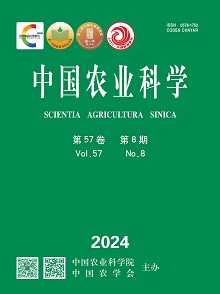【Objective】The purpose of this experiment was to explore the effects of different spring nitrogen topdressing modes on stem lodging resistance, lignin accumulation, grain yield of winter wheat, and to identify the appropriate spring nitrogen topdressing modes under the condition of high nitrogen application, so as to provide technical support for high and stable yield and stress-resistant cultivation of winter wheat.【Method】In the two wheat growing seasons of 2017-2018 and 2018-2019, the lodging sensitive variety Shannong 16 and the lodging resistant variety Jimai 22 were used as test materials, and the application rate was 1/3 under high nitrogen application rate of 300 kg·hm-2. There were four types of spring topdressing modes, which were equal amount of secondary nitrogen topdressing and remaining one-time nitrogen topdressing, namely the rising stage﹕booting stage 1/3﹕1/3 (T1), jointing stage: flowering stage 1/3﹕1/3 (T2), the remaining 2/3 nitrogen was applied at the booting stage (T3) and the remaining 2/3 nitrogen was applied at the jointing stage (CK). The effects of different nitrogen topdressing modes on stem resistance, lignin accumulation, expressive abundance of the key genes involving in lignin biosynthesis pathway and grain yield of winter wheat were studied.【Result】The total lignin accumulation and lignin monomers content of the lodging resistance wheat were both higher than those of the lodging sensitive wheat. The breaking strength under T1, CK was higher than that under T2 and T3, the lignin accumulation and monomer content were T1>T3>CK>T2 in two types cultivar, and the breaking strength, lignin accumulation, monomer content under all treatments at grain filling stage and maturity stage were T1>T3>T2>CK in two types cultivar. The breaking strength of Shannong 16 and Jimai 22 under T1 treatment were increased by 24.69%, 19.97%, 13.15% and 26.92%, 15.36%, 5.87%, respectively, compared with CK, T2, T3 at grain filling stage. The average lignin accumulation of Shannong 16 and Jimai22 under T1 at each growth stage was 21.71%, 15.45% , 8.85% and 25.19%, 21.75%, 15.83% higher than CK, T2, and T3, respectively. The average content of S monomer was 18.82%, 18.48%, and 8.39% higher than CK, T2 and T3 at maturity stage, respectively. The expressive abundance of key genes involved in lignin biosynthesis pathway (phenylalanine ammonia-lyase: PAL, caffeic acid3-o-methytransferase: COMT, coumarate-3-hydroxyl oxidase: C3H, innamoyl Co A reductase: CCR, cinnamate 4-hydroxylase: C4H etc.) decreased with the growth process, that tended to T1>T3>T2>CK under different stage of growth. The 1000-grain weight of the nitrogen topdressing remaining one-time at booting stage was higher than other treatments. T1 treatment could increase the spike number, grain number and yield. The lignin accumulation and monomer content of stem in different internodes during the same stage were I1>I2>I3>I4>I5.【Conclusion】Under the condition of high nitrogen application rate of 300 kg·hm-2 and basal application rate of 1/3, the same amount of secondary nitrogen topdressing modes treatment at the rising stage and booting stages significantly improved the breaking strength, lignin accumulation, lignin monomer content, the expressive abundance of key genes involved in lignin biosynthesis pathway and yield after anthesis stage, compared with other spring nitrogen topdressing modes. Therefore, the same amount of secondary nitrogen topdressing mode at rising stage and booting stage could be used as an appropriate spring nitrogen topdressing mode under the condition of high nitrogen application rate of 300 kg·hm-2 and basal application rate of 1/3 in Huang-Huai-Hai plain.











